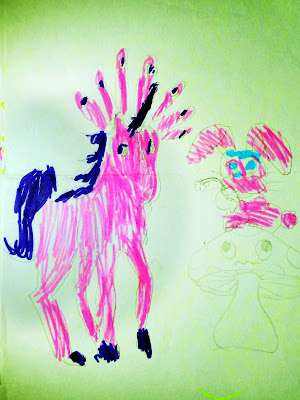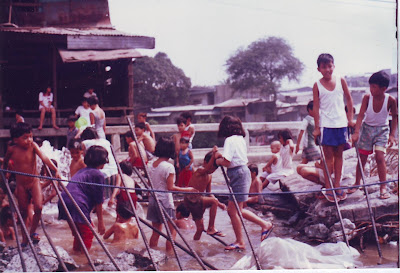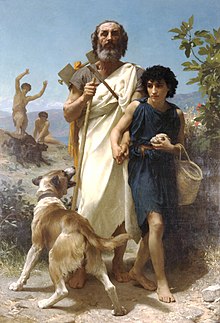Art Lessons from Mackie, 6 - Colors and Composition (In celebration of UN Children's Month, November 2018)
Art can be learned not only from the masters,
but from budding artists as well.
Dr Abe V Rotor
A pony-fish with rainbow colors,
prancing and swimming;
Green for the field, blue for the sea,
bright as the sun shining.
A pink unicorn, tame and lovely;
seven headbands make her a lady,
from fantasy to virtual reality,
for a fine children's story.
Where does composition begin?
It begins with inquiring look,
agape in surprise, frozen in place,
to imagine a nearby spook.
A pony-bee or butterfly pony
all dressed up for a party;
wonder if she's princess or fairy;
it's a rich visual story.

A test of relationship, it seems:
one wins, the other loses;
or, could it be master and pet,
or butterflies and roses?
Twin hearts of two siblings,
great love for one another;
not yet Cupid, save your shot;
let the child artist wonder
to write a story of her painting,
for time to remember.
. 
It's choreography
of a Shakespearean play,
in far, far fairyland,
brought by magic wand.
.NOTE: The author is grandfather of the child artist, Mackie R Sta. Maria, 5 years old. Medium used: colored marker and pastel on drawing paper.






























0080.JPG)



